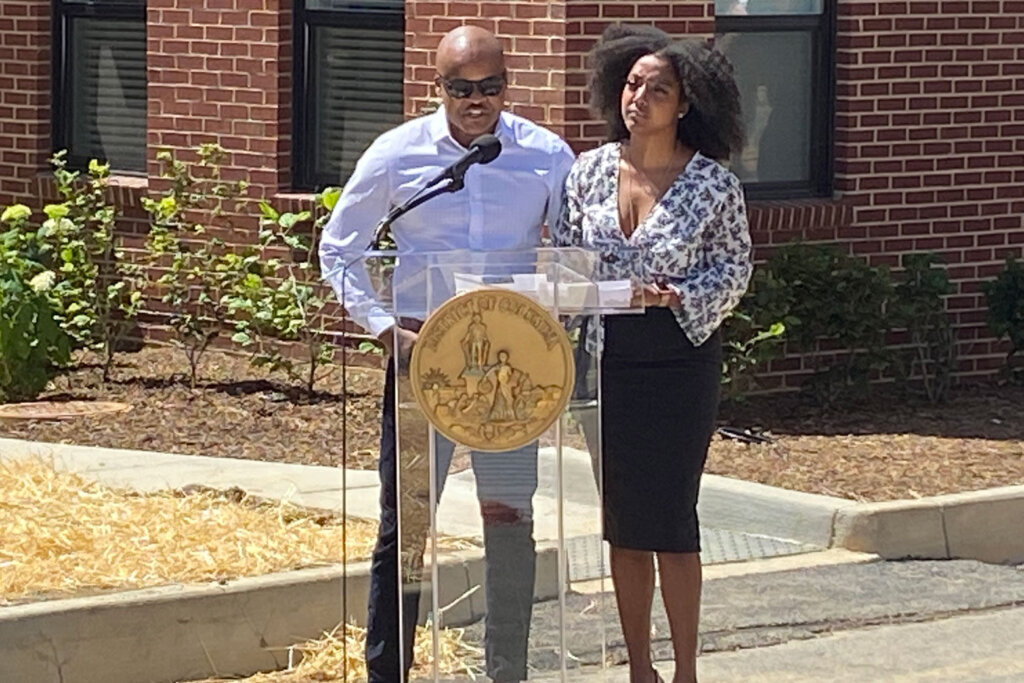This video is no longer available.
D.C. Mayor Muriel Bowser was all smiles as she stood in front of a new development that sits at Riggs Road and South Dakota Avenue, where hundreds of new homes were being built, and it wasn’t just because she was back in the neighborhood where her political career began when she was elected Advisory Neighborhood Commissions rep in 2004.
Standing around the corner from where she bought her first home, Bowser was joined by dozens of people, including old neighbors and familiar faces, to celebrate the launch of a Black Homeownership Strike Force.
“We have to address longstanding discriminatory practices that kept Black people in our city, the nation’s capital, from having access to every neighborhood and every tool that would have allowed them to buy homes generations ago and pass that wealth on to their own children,” Bowser said. “We know that Black Washingtonians are starting a few steps behind their neighbors in having the generational wealth that they had passed on to them to invest in homes.”
In October, when the new fiscal year begins, the city will have $10 million ready to put in the Black Homeownership Fund, which is to help increase and support homeownership for longtime Black residents. The strike force will work quickly to come up with ideas that will help the city support that goal.

“We hope the strike force can do its work this summer so that we can have actionable recommendations, so we can start the work of the Black Homeowners Fund by the time these budget dollars are available,” Bowser said.
There are 21 people on that task force, which is being led by Anita Cozart, the interim director of the office of planning, and Rev. Graylan Hagler.
“It’s extremely important,” Hagler said. “We’re losing the Black community out of Washington, D.C., and we should be clear that that is a crisis we need to reverse.”
“We understand how critical this issue is,” Cozart said. “This is a generational issue and there are patterns of lack of opportunity and barriers that were erected because of sets of discrimination and racism.”
There to exemplify the hope for the program, as well as the need, were Wlajimir and Nyanda Alexis, a young couple who just bought their first home in the development. They also acknowledged the difficulty it took to get there.
“The journey to homeownership has been something that’s difficult,” said Wlajimir Alexis, who is also a first-generation American. “We realize that a lot of folks have been priced out of the market.”
Bowser acknowledged that is a problem.
“We know that a lot of people want to live here, want to start their businesses here, which increases demand on housing and we have the stock that we have,” she said. “Our focus to help drive costs down — whether it’s rents or home prices — is to make sure that we have enough capacity, enough new housing, enough preserved housing, so when people are looking for housing, everybody is not trying to get one house — which we know will drive the prices up.”








